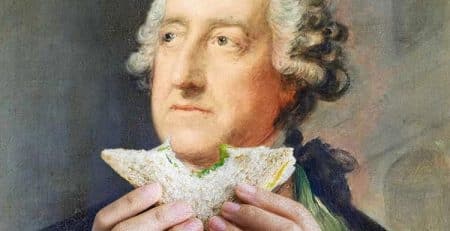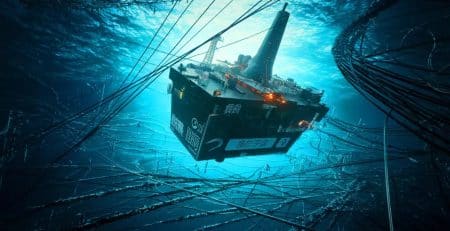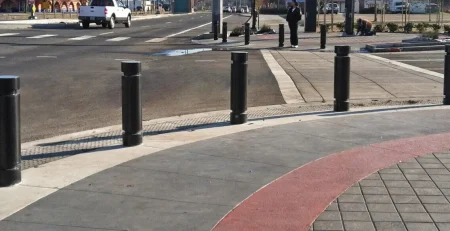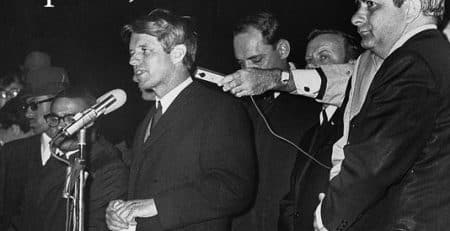Taiwan Independence Movement
History of Taiwan independence
Many supporters of independence for Taiwan view the history of Taiwan since the 17th century as a continuous struggle for independence and use it as an inspiration for the current political movement.[5][promotional source?] According to this view, the people indigenous to Taiwan and those who have taken up residence there have been repeatedly occupied by groups including the Dutch, the Spanish, the Ming, Koxinga and the Ming loyalists, the Qing, the Japanese and finally the Chinese Nationalists led by the Kuomintang. From a pro-independence supporter’s point of view, the movement for Taiwan independence began under Qing rule in the 1680s which led to a well known saying those days, “Every three years an uprising, every five years a rebellion”. Taiwan Independence supporters compared Taiwan under Kuomintang rule to South Africa under apartheid.[6] The Taiwan independence movement under Japan was supported by Mao Zedong in the 1930s as a means of freeing Taiwan from Japanese rule.[7] With the end of World War II in 1945, by issuing “General Order No. 1” to the Supreme Commander for the Allied Powers, the Allies agreed that the Republic of China Army under the Kuomintang would “temporarily occupy Taiwan, on behalf of the Allied forces.”[8] From 1928 to 1942, the Chinese Communist Party maintained that Taiwan was a separate nation.[7] Mao Zedong was an early supporter of Taiwanese independence, telling Edgar Snow in the 1930s that the Chinese Communist Party would lend “our enthusiastic help in their struggle for independence.” He changed this position only after the Nationalists started claiming Taiwan with the Cairo Declaration.[9]Martial law period


Multiparty period
After the lifting of martial law in 1987, and the acceptance of multi-party politics, the Democratic Progressive Party became increasingly identified with Taiwan independence, which entered its party platform in 1991. At the same time, many overseas independence advocates and organizations returned to Taiwan and for the first time openly promoted their cause in Taiwan, gradually building up political support. Many had previously fled to the US or Europe and had been on a blacklist held by KMT, which had held them back from going back to Taiwan. Where they had fled, they built many organisations like European Federation of Taiwanese Associations or Formosan Association for Public Affairs. By the late 1990s, DPP and Taiwan independence have gained a solid electoral constituency in Taiwan, supported by an increasingly vocal and hardcore base.[citation needed]
Lee Teng-hui administration (1988–2000)
In 1995, Taiwanese president Lee Teng-hui was given permission to speak at Cornell University about his dream of Taiwanese independence, the first time a Taiwanese leader had been allowed to visit the United States. This led to a military response from China that included buying Russian submarines and conducting missile tests near Taiwan.[16]Chen Shui-bian administration (2000–2008)


Ma Ying-jeou administration (2008–2016)
Legislative elections were held on 12 January 2008, resulting in a supermajority (86 of the 113 seats) in the legislature for the Kuomintang (KMT) and the Pan-Blue Coalition. President Chen Shui-bian’s Democratic Progressive Party was handed a heavy defeat, winning only the remaining 27 seats. The junior partner in the Pan-Green Coalition, the Taiwan Solidarity Union, won no seats. Two months later, the election for the 12th-term President and Vice-President of the Republic of China was held on Saturday, 22 March 2008.[22] KMT nominee Ma Ying-jeou won, with 58% of the vote, ending eight years of Democratic Progressive Party rule.[23] Along with the 2008 legislative election, Ma’s landslide victory brought the Kuomintang back to power in Taiwan. On 1 August 2008, the Board of Directors of Taiwan Post Co. resolved to reverse the name change and restored the name “Chunghwa Post”.[24] The Board of Directors, as well as resolving to restore the name of the corporation, also resolved to re-hire the chief executive dismissed in 2007, and to withdraw defamation proceedings against him.[25] On 2 September 2008, President Ma defined the relations between Taiwan and mainland China as “special”, but “not that between two states” – they are relations based on two areas of one state, with Taiwan considering that state to be the Republic of China, and mainland China considering that state to be the People’s Republic of China.[26][27] Ma’s approach with the mainland is conspicuously evasive of political negotiations that may lead to unification which is the mainland’s ultimate goal. The National Unification Guidelines remain “frozen” and Ma precluded any discussion of unification during his term by his “three no’s” (no unification, no independence, and no use of force).[28]Tsai Ing-wen administration (2016–present)
The Democratic Progressive Party, led by Tsai Ing-wen, won a landslide victory over the Kuomintang on 20 May 2016.[29][30] Her administration has stated she seeks to maintain the current political status of Taiwan.[31][32] The PRC government continues to criticize the ROC government, as the DPP administration has refused to officially recognize the 1992 Consensus and the One-China policy.[33][34]Legal basis for Taiwan independence
Taiwan independence is supported by the Pan-Green Coalition in Taiwan, led by the Democratic Progressive Party (DPP), but opposed by the Pan-Blue Coalition, led by the Kuomintang (KMT). The former coalition aims to eventually achieve full sovereign independence for Taiwan. Whereas, the latter coalition aims to improve relations with the Beijing government (PRC) — which it refers to as “mainland China” — and eventually “reunify” at some point. Both parties have long been forced to precariously dance around the so-called “status quo” of Taiwan’s political status. The DPP is unable to immediately declare independence due to pressure from the PRC and the KMT, whereas the KMT and PRC are unable to immediately achieve Chinese unification due to pressure from the DPP and its unofficial allies (including political factions within the United States (US), Japan, and the European Union (EU)).[35][failed verification] The 1895 Treaty of Shimonoseki and 1951 Treaty of San Francisco are often cited as the main bases for Taiwan independence in international law,[36][37][38] if such things as “self-determination” and the Montevideo Convention (on the Rights and Duties of States) are to be disregarded. These two treaties are not recognized by the Beijing government and the Pan-Blue Coalition of Taiwan. Whereas the PRC usually dismisses self-determination and the Montevideo Convention as conspiracies against Chinese sovereignty, the two aforementioned treaties have strong legal bases in international law and have been recognized by numerous countries across the globe. Notably, the Treaty of San Francisco forms the primary basis of modern Japan’s independence (from the WWII Allies), and largely dictates Japan’s modern geopolitics. The premise of citing these two treaties is that: a) Japan gained sovereignty over Taiwan in 1895, b) Japan lost sovereignty over Taiwan in 1951–1952, and c) Japan never indicated the “successor state” on Taiwan thereafter. Therefore, according to certain activists, this means that Taiwan is only controlled by the Republic of China on behalf of the WWII Allies, and does not constitute a part of the ROC’s sovereign territory. The Beijing government disregards these two treaties, claiming that: a) the Treaty of Shimonoseki has been nullified and b) the Treaty of San Francisco was illegal. Furthermore, the Potsdam Declaration and Cairo Communique are often cited as indisputable bases for Chinese sovereignty over Taiwan. The PRC also emphasizes that the United Nations (UN) refers to Taiwan as “Taiwan, Province of China”. However, this point is dubious given that it has a huge amount of influence over the UN as one of five permanent members of the UN Security Council. However, most countries do not recognize Taiwan, and only 13 have diplomatic relations with it. People’s Republic of China authorities also accuse the US, Japan, and the EU of interfering in “Chinese internal affairs”, claiming that the United States is responsible for separating Taiwan from China, and is responsible for manufacturing “artificial” pro-independence sentiments within Taiwan. Most governments, including the U.S. government, claim to adhere to a so-called “One-China Policy”, which is based on the Chinese “One-China Principle”. Within the Pan-Green Coalition of Taiwan, there are two main factions. The faction that is currently in power aims to attain official international recognition for the reality of “Two Chinas”, where the PRC and the ROC can coexist; later, the ROC can gradually “transform” itself into a Taiwanese state whilst avoiding a major conflict with the PRC. Whereas, the other faction aims to directly achieve Taiwan independence through a more abrupt and complete overthrowal of ROC institutions within Taiwan, which the faction views to be illegitimate. The use of “independence” for Taiwan can be ambiguous. If some supporters articulate that they agree to the independence of Taiwan, they may either be referring to the notion of formally creating an independent Taiwanese state, or to the notion that Taiwan has become synonymous with the current Republic of China from Resolution on Taiwan’s Future and that ROC-Taiwan is already independent (as reflected in the evolving concept from Four Noes and One Without to One Country on Each Side); both of these ideas run counter to the claims of China (PRC).The issue of Quemoy and Matsu (Kinmen and Lienchiang)
Background
When the government of the Republic of China (under the Kuomintang) was forced to retreat to Formosa and the Pescadores[39] (Taiwan and Penghu) in 1949, several Chinese (i.e. not Japanese) islands still remained under Kuomintang control. Because the Chinese Communist Party never gained control of the Kinmen, Wuqiu, and Matsu Islands, they are now governed by the Republic of China on Taiwan as Kinmen County (Kinmen and Wuqiu) and Lienchiang County (Matsu) within a streamlined Fujian Province. The islands are often referred to collectively as Quemoy and Matsu[40] or as “Golden Horse”. Historically, Kinmen County (“Quemoy”) and Lienchiang County (“Matsu”) served as important defensive strongholds for the Kuomintang during the 1950–1970s, symbolizing the frontline of Kuomintang resistance against the Communist rebellion. They represented the last Kuomintang presence in “mainland China”.[41] The islands received immense coverage from Western (especially United States) media during the First Taiwan Strait Crisis of 1954–1955 and the Second Taiwan Strait Crisis of 1958. They were very significant in the context of the Cold War, a period from 1946 until 1991 of geopolitical tension between the Soviet Union (and its allies) and the United States (and its allies). Ever since the transition into multi-party politics (i.e. “Democratization”) during the 1990s, Kinmen and Lienchiang counties have now essentially developed into two electorates that can be contested through democratic elections. Currently the two electorates are “strongholds” for the Kuomintang[42] due mainly to popular opinion within the electorates, rather than brute control (as in the past). The two electorates have recently developed close relations with the mainland, which lies only around 2–9 km west from the islands, whereas Taiwan lies around 166–189 km east from the islands.Significance of Quemoy and Matsu
Quemoy and Matsu are unique and important for several reasons.- The islands straddle the southeastern coastline of mainland China, only a few kilometers away from mainland China’s Fujian Province.
- The islands are geographically defined as being part of mainland China rather than Taiwan (aka “Formosa and the Pescadores”).
- The islands are defined as comprising the truncated, streamlined Fujian Province (officially “Fuchien Province”) of the ROC on Taiwan.
Quemoy and Matsu in Cross-Strait relations
Reportedly, the local government of Kinmen County supports stronger business and cultural ties with mainland China, similarly to the Kuomintang, and views itself as an important proxy (representative) or nexus (focal point) for improving Cross-Strait relations (that is, in the favour of Chinese unification). In January 2001, direct travel between Kinmen County (and Lienchiang County) and mainland China re-opened under the “mini Three Links”.[43] As of 2015, Kinmen has plans to become a “special economic zone” in which free trade and free investment would be allowed between it and the neighbouring mainland SEZ of Xiamen.[44] This might be accomplished in part by building a huge bridge connecting Kinmen to Xiamen, via the island of Lesser Kinmen (Lieyu);[45] A bridge has since been constructed between Greater Kinmen and Lesser Kinmen.[46] Additionally, Kinmen has plans to become a “university island”.[47] In 2010, “National Kinmen Institute of Technology” was upgraded to “National Quemoy University”.[48] Kinmen County plans to establish several branches of mainland Chinese universities in Kinmen, and has bargained with the central Taiwanese (ROC) government so that universities in Kinmen don’t have to be bounded by the same quotas as other Taiwanese universities in terms of admitting mainland Chinese students. In 2018, the local government of Kinmen County unveiled a new undersea pipeline linking Kinmen to mainland China, through which drinking-water can be imported.[49] This business deal caused controversy in Taiwan and resulted in a “stand-off” between Kinmen County and the Mainland Affairs Council of Taiwan (ROC).[50]Quemoy and Matsu as part of Taiwan
|
|
This section does not cite any sources. (December 2022) |
Positions
The questions of independence and the island’s relationship to mainland China are complex and inspire very strong emotions among Taiwanese people. There are some who continue to maintain the KMT’s position, which states that the ROC is the sole legitimate government for all of China (of which they consider Taiwan to be a part), and that the aim of the government should be eventual unification of the mainland and Taiwan under the rule of the ROC. Some argue that Taiwan has been, and should continue to be, completely independent from China and should become a Taiwanese state with a distinct name. Then, there are numerous positions running the entire spectrum between these two extremes, as well as differing opinions on how best to manage either situation should it ever be realized. On 25 October 2004, in Beijing, the U.S. Secretary of State Colin Powell said Taiwan is “not sovereign,” provoking strong comments from both the Pan-Green and Pan-Blue coalitions – but for very different reasons. From the DPP’s side, President Chen declared that “Taiwan is definitely a sovereign, independent country, a great country that absolutely does not belong to the People’s Republic of China”. The TSU (Taiwan Solidarity Union) criticized Powell, and questioned why the US sold weapons to Taiwan if it were not a sovereign state. From the KMT, then Chairman Ma Ying-jeou announced, “the Republic of China has been a sovereign state ever since it was formed [in 1912].” The pro-unification PFP Party Chairman, James Soong, called it “Taiwan’s biggest failure in diplomacy.”[51]Support for independence

- removing the name of “China” from official and unofficial items in Taiwan,
- changes in history books, which now portrays Taiwan as a central entity,
- promoting the use of Hokkien Language in the government and in the education system,
- reducing economic links with mainland China,
- opposing Chinese unification regardless of mainland China being a democracy and
- promoting the general thinking that Taiwan is a separate entity.
Support for status quo
A second view is that Taiwan is already an independent nation with the official name “Republic of China,” which has been independent (i.e. de facto separate from mainland China/de jure separate from PRC) since the end of the Chinese Civil War in 1949, when the ROC lost control of mainland China, with only Taiwan (including the Penghu islands), Kinmen (Quemoy), the Matsu Islands off the coast of Fujian Province, and some of the islands in the South China Sea remaining under its administration.[54] Although previously no major political faction adopted this pro-status quo viewpoint, because it is a “compromise” in face of PRC threats and American warnings against a unilateral declaration of independence, the DPP combined it with their traditional belief to form their latest official policy. This viewpoint has not been adopted by more radical groups such as the Taiwan Solidarity Union, which favor only the third view described above and are in favor of a Republic or State of Taiwan. In addition, many members of the Pan-Blue Coalition are rather suspicious of this view, fearing that adopting this definition of Taiwan independence is merely an insincere stealth tactical effort to advance desinicization and the third view of Taiwan independence. As a result, supporters of Pan-Blue tend to make a clear distinction between Taiwan independence and Taiwan sovereignty, while supporters of Pan-Green tend to try to blur the distinction between the two.[55] Most Taiwanese and political parties of the ROC support the status quo, and recognize that this is de facto independence through sovereign self-rule.[56] Even among those who believe Taiwan is and should remain independent, the threat of war from PRC softens their approach, and they tend to support maintaining the status quo rather than pursuing an ideological path that could result in war with the PRC. When President Lee Teng-hui put forth the two-states policy, he received 80% support. A similar situation arose when President Chen Shui-bian declared that there was “one country on each side” of the Taiwan Strait. To this day, the parties disagree, sometimes bitterly, on such things as territory, name (R.O.C. or Taiwan), future policies, and interpretations of history. The Pan-Blue Coalition and the PRC believe that Lee Teng-hui and Chen Shui-bian are intent on publicly promoting a moderate form of Taiwan independence in order to advance secretly deeper forms of Taiwan independence, and that they intend to use popular support on Taiwan for political separation to advance notions of cultural and economic separation.Opposition to independence


Opinion polls
In an opinion poll conducted in Taiwan by the Mainland Affairs Council in 2019, 27.7% of respondents supported Taiwan’s independence: 21.7% said that the status quo has to be maintained for now but Taiwan should become independent in the future, while 6% said that independence must be declared as soon as possible. 31% of respondents supported the current situation as it is, and 10.3% agreed to unification with the mainland with 1.4% saying that it should happen as soon as possible.[59] Several polls have indicated an increase in support of Taiwanese independence in the three decades after 1990. In a Taiwanese Public Opinion Foundation poll conducted in June 2020, 54% of respondents supported de jure independence for Taiwan, 23.4% preferred maintaining the status quo, 12.5% favored unification with China, and 10% did not hold any particular view on the matter. This represented the highest level of support for Taiwanese independence since the survey was first conducted in 1991.[60][61] A later TPOF poll in 2022 showed similar results.[62][63] The Election Study Center, NCCU Taiwan Independence vs. Unification with the Mainland Survey shows a steady increase in respondents choosing “maintain the status quo and move toward independence in the future” since it started in 1994. However, the option “maintain the status quo indefinitely” had a similar increase in the same period and the most popular option was “maintain the status quo and decide in the future between independence or unification” every year between 1994 and 2022. The option “independence as soon as possible” never went above 10% in the same time period. “unification as soon as possible” has been more unpopular – never going above 4.5%.LIFE Magazine March 2, 1953
















